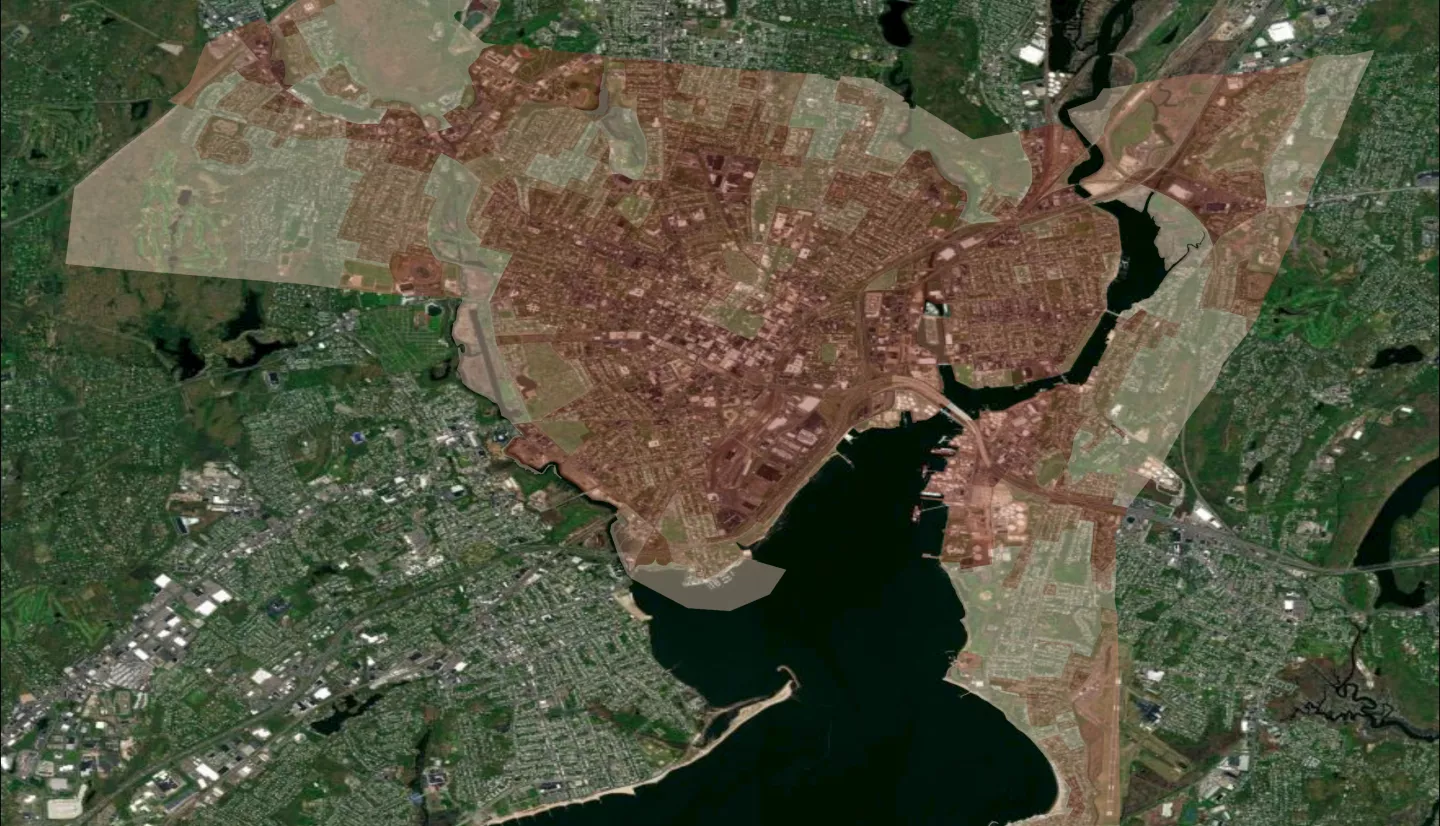Team Members: Shijuan Chen (Yale School of the Environment), Michelle Bell (Yale School of the Environment), Xuhui Lee (Yale School of the Environment), Edith Pestana (Connecticut Department of Energy and Environment), Danica Doroski (Connecticut Department of Energy and Environment), Carl J. Amento (South Central Regional Council of Governments), Colleen Murphy-Dunning (Urban Resources Initiative), Katie Lund (Yale School of the Environment), Erin Shives (Yale School of the Environment), Jeffrey Blay (Yale School of the Environment)
Executive Summary: The increasing frequency and intensity of extreme heat events is both a physical and mental health hazard, especially for low-income and minority communities, who often have unequal access to both tree cover and ecosystem service benefits from canopy cover. Compounding the lack of access to tree cover, Environmental Justice (EJ) communities are more likely to have lower health care access, higher rates of cardiovascular issues, and lower levels of air conditioning ownership, making them more vulnerable to heat stress. Although increasing canopy cover can mitigate urban heat and simultaneously improve community well-being, urban land managers and policymakers have limited information on where to target and prioritize interventions that will have the largest impact on reducing heat exposure and improving health outcomes for EJ communities. This project aims to fill this knowledge gap.
The overarching goal of this project is to characterize and monitor urban heat and tree canopy cover to identify communities most at risk to increasing urban heat and those with low access to ecosystem benefits of canopy cover. Using multi-decadal and multi-scale satellite data from MODIS, Landsat, USDA’s National Aerial Imagery Program, Microsoft database of building footprints, and socioeconomic information, we will map for both the state of Connecticut and the city of New Haven: 1) trends in urban heat; 2) trends in tree canopy cover; and 3) EJ community access to tree canopy cover and their ecosystem service benefits.
This project partners with the Connecticut Department of Energy and Environmental Protection (DEEP), who will use the results to implement state-wide policies regarding environmental justice, including prioritizing interventions for at-risk communities. We have also partnered with the South Central Regional Council of Governments (SCROG), which is a platform for cross-city coordination, cooperation, and decision making. We have a community-scale partner through the non-profit Urban Resources Initiative (URI), who is the contractor for New Haven’s tree planting and will use this project’s output to identify neighborhoods and communities most at risk of UHI impacts to prioritize street planting.
This project has the potential to catalyze policymaking and action and ultimately improve community wellness and reduce health inequities for over 350,000 Connecticut residents who live in poverty, over 31,000 of whom are in New Haven.
